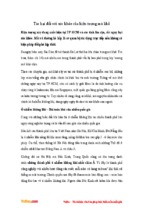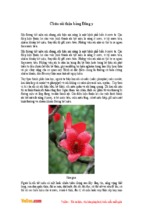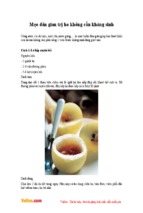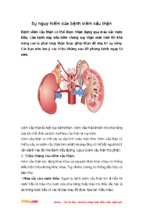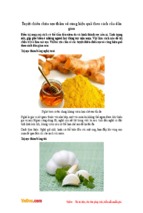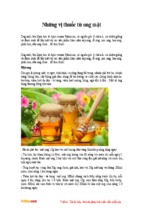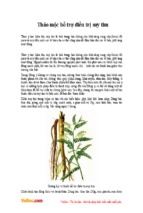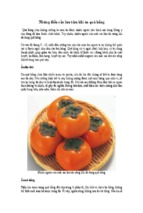Flora of Jizan Region
AR-17-7
Final Report
Vol.- 1
By
Principal Investigator
Prof. Ahmed H. Alfarhan
Herbarium, Dept. of Botany & Microbiology,
College of Science, King Saud University,
Riyadh.
Co-investigators
Prof. Turki Ali Al-Turki
Natural Resources and Environmental Research Institute,
King Abdulaziz City for Science and Technology,
Riyadh.
Prof. Abdullah Yahya Basahy
Community College, King Khalid University, Jizan.
Supported by
King Abdulaziz City for Science and Technology
(KACST)
2005
2
Contents.
I.
Preface
4
II.
Acknowledgements
6
III.
Introduction
7
IV.
A. Topography and Vegetation
7
B. Climate
23
C. History of Plant Collection
26
D. Plan of the Flora
27
E. A brief account of the flora of Jizan Province
28
F. Cultivated plants from Jizan Province
30
G. Weeds of Jizan Province
32
H. Threat facing the flora of the region
33
I. Regional Endemic plants
37
Systematic Account of the flora
38
1. Pteridophytes
38
2. Gymnosperms
44
3. Angiosperms-Dicots
46
4. Angiosperms-Monocots
428
V.
Gazatteer
506
VI.
References
507
VII. List of Illustrations
510
VIII. Vernacular Names
516
IX.
523
Index of species and families.
3
I. Preface
The identification of wild plants from Saudi Arabia
was difficult in the past few decades particularly in 1980's and in
the beginning of 1990's primarily due to the lack of a well
written Flora. Although a consolidated work of the plants of
Saudi Arabia (various editions of ‘Flora of Saudi Arabia’
published from 1974 to 1990) by Prof. Migahid (King Saud
University, Riyadh) was available in those days, the book
contained only half of the plants that are known today and
moreover, a considerable number of names and photographs
given in the text were, to a certain extent, confusing and
erroneous or sometimes even misleading. The need for an
updated Flora was therefore inevitable for both botanists and
students of this region. During the last two or three decades,
plant collections in the Arabian Peninsula have been intensified
with the active support and collaboration of various Ministries,
Universities and Organizations; and as a result of such intensive
and extensive plant explorations, the number of wild species
from Saudi Arabia has been increased from an approximately
1500 species to 2243 species. Among these a significant number
of species are reported from the Jizan Province, particularly
from the high altitude regions, such as Jabal Fayfa, Wadi Lejib,
Jabal Qahar, etc. Although the regions in and around Jizan were
famous for their traditional agricultural lands and centuries old
houses on the mountain slopes, the area was botanically less
known to the outside world. One of the reasons was, perhaps,
due to the lack of motorable roads along the mountain range or
most of the botanists/collectors were residing in major cities far
away from the region. Although several expeditions were
conducted along the inhospitable tracts of the mountains of
southwestern region, particularly in the Jizan Province ever
since the period of Forsskal in the eighteeth century, botanists in
Arabian Peninsula had a strong feeling that a thorough
exploration in and around Jizan would help in adding several
species to the flora of Saudi Arabia as the region borders with
one of the botanically rich regions like Yemen. We, in 1998,
have realized the importance of studying the flora of Jizan
Region and submitted a proposal to the Directorate for Research
Grant Programme, King Abdulaziz City for Science and
Technology (KACST). Fortunately the proposal was approved
by the authorities in the same year and the concerned studies for
the write up of a Flora was initiated in 1999.
4
The work of a provincial flora of southern Saudi
Arabia, such as this one, is first of its kind in the Kingdom. The
value of such a work is, therefore, helpful in knowing the
distribution range of several species in the region. An analysis
on the results obtained at the end of the study revealed that a
significant number of species were reported for the first time
from Jizan region. Southwestern region, particularly Jizan
Province is important for many centuries as far as the vegetation
is concerned because of the region’s close proximity with
several North Eastern countries in Africa, particularly Ethiopia
which is one of the Vavilov’s centres of origin of cultivated
plants. Plants such as Coffea arabica, Sorghum bicolor, etc.
have been cultivated in this region for many centuries and it is
believed that some of the wild varieties of these genera are
important for plant breeding purposes. The fruits, seeds and
other propagules of several wild and cultivated plants of this
region are also a good source material for gene banks. In short,
this work provides the very basic data regarding plant wealth of
Jizan Region and helps students of Botany to open up research
in various taxa.
The purpose of the Flora of Jizan Project stands for
fulfilling three main objectives. The foremost objective was to
write up a Flora of Jizan Province. Secondly to enrich the
Herbarium (KSU) at the Botany & Microbiology Department,
King Saud University with specimens from the study area, and
thirdly to sort out the confusion pertaining to the nomenclature
of some of the confused taxa and also to add more species or
genera to the existing floristic list. Seven reports were submitted
during the project period, each containing the description of an
average 150 species. This is the final report of the project (AR17-7) funded by the King Addulaziz City for Science and
Technology (KACST).
This report deals with 850 species of Vascular
plants which are wholly indigenous or naturalised. Exhaustive
keys to taxa like genera and species have been provided for easy
determination. Key to the families is avoided in this work.
Readers who wish to look at the key to the families can follow
the key given in the Flora of the Kingdom of Saudi Arabia, Vol.
1., pp 16-31. (Alfarhan & J. Thomas in Chaudhary, S. 1999,
Ministry of Agriculture and Water, Riyadh).
5
II. Acknowledgements
The work of this project has started in 1999 and
continued for about five years. During this period, a considerable
number of specimens have been collected and deposited in the
Herbarium (KSU) at King Saud University. Apart from the new
collections, all previous collections from Jizan Province deposited in
various Herbaria in Riyadh have also been incorporated while writing
the final report of this project. All these efforts were achieved by the
active and dedicative backing of a number of people. Though it is
difficult to mention all of them, it would be inappropriate ignore the
following names.
We are highly indebeted to the Director at the General
Directorate for Research Grant Programme, King Abdulaziz City for
Science and Technology (KACST) for moral and material support,
which were indeed a great boost in carrying out and completing this
work. We are also thankful to all concerned members at the Office of
the Vice President, Graduate Studies and Research, King Saud
University for their quick and sincere efforts in forwarding the files and
reports to KACST. We are also grateful to the referees of this project,
whose timely suggestions and comments during the course of this
research had helped us to improve the contents of the periodical reports
and the overall nature of our research work.
We sincerely thank Mr. Jacob Thomas (Curator,
Herbarium, KSU) for the help he has extended to us during the course
of this research, without which a work of this kind would not have been
completed even now. We also thank other staff of this project
paticularly Dr. Mathew Varghese (Research Assistant) and the
scientific artists, Mr. M.Y. Saleem and Mr. Pradeep Kumar who spent
1-2 years during the project-period,. Dr. Mathew and Dr.
Swarupanandan (KACST) were part of the expedition teams to the
study-area on several occasions. The paintings of the plants by the
artists are extremely good and appreciable which, in fact, have helped
us to improve the overall quality of this report. Their contributions to
this project are highly laudable. We also extend our gratitude to Mr.
Saleh Al-Shaye (Herbarium, KSU) and to Dr. A.E. Shanavas Khan
(KACST) for their help in the preparation of a few interim reports. Dr.
S. Chaudhary (National Herbarium, RIY) was helpful on many
occasions. His timely advice and suggestions helped us to sort out the
confusion pertaining to the nomenclature of several specimens. Finally
we thank Mr. Mohammed Mateen for typing several interim reports.
6
III. Introduction
The Jizan Province is situated in the south-western part of Saudi Arabia. The
study-area except Farasan Islands is located between 160 20` N to 170 40` N and 410
55` E to 430 20` E. (Figs.1 & 4). The southern region of the study area borders with the
north-western frontier regions of Yemen while its northern and eastern sides border
with Ash-Shuqaiq town and the eastern slopes of Fayfa Mountains respectively. The
region has about 260 km long coastal area on the western side, stretching from AlMuwassam in the south to Ash Shuqaiq in the north. There are a few islands (Farasan
Islands) in the Red Sea, 40 kms off the Jizan coast. It is a conglomeration of several big
and small islands, ranging from 369 sq. kms to less than 5 sq. kms.
The study area is part of the Arabian shield, which is covered by Tertiary
volcanic rocks. During the Precambrian age, Jizan Province was part of the African
continent. As a result of tectonic movement, the quadrangular mass of Arabia
separarted along the Red Sea and occupied a position between Africa and the rest of
Asia. The vegetation of this region is therefore closely related to that of East Africa.
Two phytogeographical regions are present within the study area, viz. the Somali-Masai
regional centre of endemism and Afro-Montane archipelago-like regional centre of
endemism.
The Jizan region can be broadly divided into Tihama, the Escarpments and the
Farasan Islands. The first two regions were part of the oldest agricultural centres of the
Arabian Peninsula and composed of wadis, mountains and plateaus. In ancient times,
these areas were regarded as the gateway for both crop plants and early travellers from
the African and Asian countries. Although the economic boom in the Kingdom from
crude oil has diminished importance of Jizan Region, the well maintained agricultural
terraces along the slopes of southern Hijaz Mountains still supported the growth of a
wide range of cash crops including Sorgo, Coffee, Millets, etc. The area contains a
significant proportion of species of the flora of Saudi Arabia, including several endemic
and rare species. As the area is located in the south-western tip of the country, the rich
and varied flora present in the mountains have a close proximity with the floras of
Yemen and East Africa.
A. Topography and vegetation
A.1. Tihama
This area lies between the Red Sea and the Escarpments, with a maximum width
of 80 km in the west-east direction and covers about 24, 000 sq. km. The evolution of
Tihama is believed to be started in Oligocene and continued to recent geologic times.
The whole area can be divided into: shoreline, salt pans, sand-dunes & plains and wadis
a. Shore line.
The entire coastal line of Jizan Region, stretching about 260 km in the north-south
direction, is more or less fringed with many inlets and creeks ("Mersas" or Khawrs").
The shores are sloping gently towards the sea, paving for a wider horizontal tidal belt
with no erosion. On the basis of the steepness and soil compositions, different zones of
plant communities have been observed along the shore-line. In Ras-Qarn, where the
inter tidal belt is sloping gently and the bottom area is sandy and rocky, the community
7
is dominated by sea grasses whereas in Midaya, the community is dominated by Algae
because of a steeper and muddy shore-line. Patches of Avicennia marina are common
in the shallow waters of the creeks and inlets. These mangrove-plants along with their
pneumatophores serve as shelters for many larvae of the sea. Most of the mangrove
stands are located near the openings of wadis. Thick deposits of alluvium and other
sediments (which are brought in by flash floods from the escarpments) are present in
these estauries. The extent and magnitude of the growth of Avicennia marina stands
varies from area to area. The Avicinnea stands of Khawr Abu Saba and Madaya were
reported to be the longest (45 and 30 km respectively) while that of Al-Sehee was only
2 km. Most areas of open coast is characterised by elevated Pleistocene reef flats. Large
colonies of sea grasses (Halodule univervis, Halophila ovalis) can be observed along
the fringes of the reefs in the shallow waters. The surface, on which these grasses grow,
varies from almost pure fine sand to coarse sand with shell debris.
8
Fig. 1. Map of Jizan Province
Alluvial soil that comes in along with rainwater, accumulates in the protected
areas such as inlets and creeks, and provides a substratum suitable for mangrove
vegetation. Khawr Abu Saba, Ras Qarn, Midaya, Besari, Al-Sehee, etc. are some of the
areas that provide a habitat for the luxurious growth of Avicennia marina (Forssk.)
Vierh. Soils in these areas are generally blackish-brown or dark brown in colour,
indicating the presence of high organic matter. Although mangroves can be seen in the
entire coastal region of Jizan province, the longest concentrations are in Khawr Abu
Saba (45 km) and Midaya (30 km), while the widest areas are in Midaya and Besari
with an average width of 150m. Mangrove population in the mainland consists of a
monospecific population (Avicennia marina) whereas in Farasan Islands and in one or
two pockets along the Red Sea coast, Avicennia marina can be seen growing along with
another mangrove, Rhizophora mucronata Lam.
Fig. 2. Tihama plains. Vegetation dominated by Leptadenia pyrotechnica
and Acacia tortilis
The presence of sea-weeds is the most characteristics of all sea coasts, including
the coast of Jizan. Approximately 34 species belonging to four categories (Green, Red,
Brown and Blue-Green) were recorded from the study area. However, the sea grasses
are apparently dominating over algae (sea weeds) in most of the sub-littoral areas,
particularly in regions around Ras Qarn. A total of six species (Cymodoca rotundata,
Enhalus acoroides, Halodule australis (=univervis), Halophila ovalis, H. stipulaceae
and Thalassia hemprichii) are reported from the regions between Muwassam and Ras
Al-Tarfa. These sea grasses are usually seen in areas ranging from deep to shallow
waters. Enhalus acoroides is always seen in deep waters (c.1-1.5 m) followed by
Thalassia hemprichii, whereas all other species occur in less deeper waters. All these
species can be observed in between 1 m to 300 m away from the sea-shore.
Nevertheless, the distribution of sea grasses is not uniform in all places. For example, in
Midaya, Muwassam, etc, the occurrence of these plants is not so prominent because of
9
high water turbidity.
b. Salt pans (Sabkhas)
The sea-grass substratum and mangrove-fringe are backed by a more or less
unbroken narrow stripe of salty areas which extend the entire western side of the study
area. In areas where there are no wadi systems and no accumulation of alluvial soils, the
salt pans gradually descent towards the shallow sea. However, the drainage in these
sabkhas is very poor and therefore water accumulate on the surface of these pans, forcing
the salt to precipitate on the substratum. The vegetation in such habitats is dominated by
Suaeda monoica, Halopeplis perfoliata, Sporobolus spicatus, Aeluropus lagopoides,
Cressa cretica, Tamarix nilotica, Zygophyllum simplex, Desmostachya bipinnata, Cyperus
conglomeratus, etc.
c. Sand dunes and plains
Dunes and plains constitute some of the major land-forms in Tihama. Major wadis
and their tributaries dissect through the dune formations and end in the Red Sea. Dunes are
usually formed by the deposition of silt brought in by the flash floods and subsequent piling
up of sand by wind. During rainy days flash floods often over flows the low banks of the
wadis and spill over a wide area. Suaeda monoica, apart from its presence in sabkhas, also
forms small stands on the dunes. Other dominating plants include: Leptadenia
pyrotechnica, Panicum turgidum, Pennisetum divisum, Diptergium glaucum, Tephrosia
purpurea, etc. The field observations indicated that most of the areas within the open plains
are appear to be barren. Since this part of Tihama is very dry, the density and vigour of
plant growth are mainly controlled by the availability of water. The vegetation in these
plains is represented by both trees and shrubs. The important plants are: Acacia tortilis,
Ziziphus spina-christi, Leptadenia pyrotechnica, Indigofera spinosa, Aerva javanica, Senna
italica, Calotropis procera and Capparis decidua. Among the herbs, Fagonia indica,
Blepharis ciliaris, etc show a greater representation in dry plains.
Muwassam (160 20' N, 420 45' E), the southern tip of the study area, bordering
Yemen, is a coastal area with a few plants of xerophytic and halophytic adaptations.
Avicennia marina, which is dominating in most parts of the shoreline, is in a highly grazed
state in the mainland area of Muwassam, whereas the mangrove-vegetation is highly intact
in small islets. Close to the sea-shores but away from the sea-water, plants like Suaeda
monoica, Zygophyllum coccineum (Z. boulosii auct Hadidi), Z. simplex, Cressa cretica,
Aeluropus lagopoides, etc, are common in many places. As usual, ephemerals constitute
the bulk of the vegetation in inlands. On the way to Samtah and Muwassam, the most
dominant plant community along the sides of the highway is the Salvadora persica, which
often forms dense thickets intermixed with Acacia ehrenbergiana. Undulating sand dunes
occupies in a relatively small area. These sand dunes are less mobile and are often without
plants. However, Leptadenia pyrotechnica, Acacia ehrenbergiana, Tamarix nilotica are
some of the species colonizing on these dunes. The vegetation in the entire southern region,
which is close to the Yemen-border, is more or less sparse. Yet, there is a gradual increase
in the density and abundance of plants from the seacoast to inlands. Large thickets of
Salvadora persica are prominent in many parts of Madaya, Samtah and At-Tuwal. As
mentioned earlier, the other dominant species in these regions are Calotropis procera,
Acacia ehrenbergiana, Leptadenia pyrotechnica, Suaeda monoica, etc. In and around the
regions of Madaya, sand accumulates at the base of Leptadenia pyrotechnica and Acacia
ehrenbergiana. Tamarix aphylla, T. nilotica and Ziziphus spina-christi along with
Tephrosia purpurea, Calotropis procera, Aerva javanica, Abutilon bidentatum, etc. takes
10
refuge along the banks and on raised beds of the wadis.
11
Fig. 3. Geological map Jizan plain.
12
Fig. 4. Topography of Jizan Province
d. Wadis
Although the slopes from the foot-hills are gradual, there are areas where
small gullies develop prior to the formation of large water courses. There are about
fifteen wadis, crossing Tihama of Jizan Region and heading in a seaward direction.
Among these wadis, Itwed, Baysh, Dhamad, Jizan and Khulab are considered
important. These wadis account for a mean annual run off rate in the Red Sea of 7.4
m3/Sec. The wadis are generally dry for the whole year or for successive years.
However, occasional spates develop during rainy days. These flash floods often destroy
the riparian vegetation. The vegetation in the
wadis, near the foot-hills is luxuriant
13
whereas it is sparse as the wadis approach nearer to the sea. Near the foot-hills, where
the wadis originate, the vegetation is dominated by Acacia ehrenbergiana, Salvadora
persica, Dobera glabra, Delonix elata, Tamarindus indica, Berchemia discolor,
Imperata cylindrica, etc. Along the wadis, small lagoons or stagnant water support the
vegetation of Typha domingensis, Cyperus laevigatus, etc. Vegetation in wadis of
Central Tihama is more scattered except in large depressions where it appears to be
more pronounced. Dominating plants of this area include: Hyphaene thebaica, Phoenix
dactylifera, Desmostachya bipinnata, Tamarix nilotica, Abutilon bidentatum, Senna
alexandrina, Acacia ehrenbergiana, etc. Climbers like Pentatropis nivalis, Cocculus
pendulus, Zahneria anomala, etc often grow on trees like Acacia spp. and Tamarix
nilotica. Although wadis support the vegetation of a considerable number of
mesophytes, patches of xerophytic communities comprising Aloe spp. Desmidorchis
retrospiciens and Cissus rotundifolius show their presence near the vicinity of the foothills.
Flash floods originate from the deep gorges of the western slope and join with
the upper tributaries of the main wadi systems. Wadis are part of a 20-40 km or so long
water courses, stretching from the foot-hills of Fayfa Mountains to the Red Sea. Wadi
beds are generally dry with deposits of sand and silt. Severe soil erosions were
observed in many places of the main water path except in areas of dense vegetation
where the plant roots firmly bind the silt together. Vegetation of these silt pans are
dominated by Acacia tortilis, Acacia ehrenbergiana, Salvadora persica, Desmostachya
bipinnata, Tamarix nilotica, Senna alexandrina and Abutilon bidentatum. The silt pans
of the wadis, in certain areas, extend into broad plains, thus merging with the sand dune
plains of the coastal areas. Vegetation of such areas is dominated by Ziziphus spinachristi, Leptadenia pyrotechnica, Hyphaene thebaica, etc. Ground cover in the entire
wadi area is sparse. However, some of the widely distributed species are Glinus
lotoides, Amaranthus graecizans, Boerhavia difffusa, Zaleya pentandra, Pluchea
dioscoridis, Cucumis prophetarum and Emex spinosa.
Wadi Tashar and wadi Kawbah, the border regions near Yemen frontier, are
more favorable for plant growth as most of the silty regions of the wadi are wet due to
stagnant water. Dense vegetation comprising Saccharum spontanem, Tamarix spp.,
Acacia ehrenbergiana, Indigofera oblongifolia, and Lawsonia inermis can be seen
along the banks whereas Panicum turgidum, Blepharis ciliaris, Aerva lanata, Lippia
nodiflora, Eclipta alba, Senra incana, etc. are dominating on the dry surfaces and near
the stagnant waters of the wadis. The hilly areas are generally dry and hot due to the
lack of any precipitation. The perennial components, other than the succulents like
Euphorbia triaculeata, Desmidorchis retrospiciens, etc. and trees like Dobera glabra,
Acacia ehrenbergiana and A. nubica were highly grazed and look-like club formations.
Characteristic perennial components include: Cadaba rotundifolia, Commiphora
quadricincta, Jatropha pelargoinifolia and grasses such as Cenchrus pennisetiformis,
Panicum turgidum, etc.
Another important, rather interesting area visited by the team during their
exploration was Wadi Lejib (170 40' N, 420 55' E). It is about 100 km NE of Baysh and
situated in the middle of two steep mountains. It is a 20 km long narrow gorge with
numerous small and large boulders spreading along the wadi beds. Vegetation along the
mountain summit is dominated by Olea europea, Ficus cordata ssp. salicifolia, Clutia
reichardiana, Caralluma spp., etc. The slopes leading to the gorge is sparsely vegetated
with a few trees like Mimusops laurifolia and14 Ziziphus spina-christi. The major tree
components in wadi Lejib include: Nuxia oppositifolia, Ficus vasta, Grewia velutina,
Breonadia salicina, Cordia sinensis, Phoenix reclinata, Trichillea emetica, Terminalia
brownii, Cadia purpurea, etc. At least a few plants like Epipactis veratrifolia,
Periploca visciformis, Pisonia aculeate etc, are also collected from these gorges which,
in Saudi Arabia, are appear to be confined to the wadi Lejib only . Although there are a
lot of recreational activities, like camping, take place at the mouth of the gorge, the
vegetaion, to a certain extent, is less altered by external influence and therefore, despite
the decline of the population of many trees such as Mimusops laurifolia, Breonadia
salicina, etc., in other parts of the country, the populations of these trees and many
other endangered plants are thriving well in Wadi Lejib (Lejib Gorge).
Fig. 5 . Major wadis in the study area.
15
1.
2.
3.
4.
Fig. 6.
Vegetation Map of the Jizan Province
16
Acokanthera-Rumex nervous community
Juniperus procera community
Xeromorphic scrub community
Acacia ehrenbergiana-Commiphora
community
5. Avicennia marina community
6. Rhizophora-Avicinnia community
7. Zygophyllum coccineum-Cressa creticaAeluropus community
8. Limonium axillare-Zygophyllum community
9. Acacia- Leptadenia community
10. Suaeda monoica community
11. Acacia ehrenbergiana-Salvadora community
12. Acacia ehrebergiana-Acacia tortilis
community
13. Acacia-Dipterygium-Ziziphus community
14. Panicum turgidum-Pennisetum divisum
community
15. Acaica tortilis-Salvadora-Leptadenia
community
16. Panicum-Leptadenia community
17. Suaeda monoica-Leptadenia community
18. Acacia tortilis-Commiphora-Euphorbia
cuneata community
19. Salvadora-Hyphaene-Dobera glabra
community
20. Acacia-Trichellia emetica-Delonix
community
21. Acacia asak-Commiphora community
22. Breonadia-Nuxia oppositifolia community
23. Olea europaea community
24. Acacia etbaica community
Fig. 7. A view of Malaki Dam
Fig. 8. Terraced landscape of Fayfa Mountains.
17
Fig. 9. Agricultural Terraces in Jabal Haps.
Fig. 10. A view from Jabal Hashar.
18
A 2. Foot-hills and Escarpments.
The mountains of Jizan Region occupy the eastern side of the study area. It
reaches a height of about 2000 m. The west facing slopes are steep while its eastern
side slopes gently towards the inland plateau. The mountains are generally
distinguished by crystalline basement rocks with pre-Permian granites, diorites, green
stones, marble and quartzite. Gravels, sand, silt and clay are also found at the base of
the mountains. The foothills are characterized by rocky slopes, cliffs and crevices with
granite, sandy soil whereas the hilly areas are generally formed of rocky cliffs, rocky
ridges, granite boulders, granite outcrops, granite sandstones and crevices. The highest
peaks of the mountains are heavily populated with new houses and agriculture lands
added every year.
The Fayfa Mountains commonly known in Arabic as 'Jabal Fayfa', is one
of the mega relief centres of the southwestern region of Saudi Arabia, as far as the
vegetation is concerned. Characterised by a mosaic environment, these hill-tracts hold a
relatively rich and diverse flora. Elevations of these undulating mountains vary from
900 m (Al-Ghardha) to about 2000 m (Al-Abseeya); and extend over several kilometers
along a roughly north-south axis. On the southern side, these mountains join the
mountains of Yemen and on the north with the mountains of Bani Malik. Compared to
the eastern side, the west facing slopes of the mountains are steep and are characterized
by dense vegetation. The eastern slopes are the rain shadow regions and are less
species rich. Although the mountains receive immense amount of water from monsoon
rains, most of the vegetation units are appear to be of secondary in origin. Dominant
members of the plant community between 1500-2000 m include: Acacia mellifera, A.
seyal, Juniperus procera, Carissa edulis, Euclea schimperi, Ficus sycomorus, Catha
edulis, Dracaena ombet, etc. Most of the terrain in the Fayfa Mountains, which have
been converted into agricultural terraces in the past, are now abandoned. The natural
vegetation of these slopes is now replaced by the secondary vegetation or by exotic
weeds. A considerable number of weed-species, such as Tridax procumbens, Chloris
barbata, etc and most recently Opuntia dillenii and O. ficus-indica had found their
entry into the Kingdom through these mountains. Among these Opuntia spp. are vastly
spreading in the region. The ground cover along the slopes is composed of
Rhychelytrum repens, Panicum maximum, Chloris gayana, Brachiaria leersoides,
Cenchrus ciliaris, etc. Woody herbs and dwarf shrubs are also present along these steep
slopes.
Fayfa Mountains is not a single steep escarpment but a series of mountain
ranges which are cut by deep valleys. The elevation of the Fayfa Mountains from the
foot-hills is gradual till it reaches at an altitude of about 1300 m. Further elevation of the
mountain towards the summit is somewhat steep. The hillocks on the outerside of the
mountain range are less than 700 m high. The vegetation on these hillocks is somewhat
sparse and in a highly degraded state due to heavy grazing and flash-floods. The
vegetation of the low lying areas is dominated by Acacia etbaica along with occasional
trees of A. mellifera and A. asak. Commiphora spp. and Acacia ehrenbergiana are the
main componets of the hills below 500-900 m. Other trees such as A. abyssinica,
Combretum molle, Tichellia emetica, Tamarindus indica, Ziziphus spina-christi, Dobera
glabra, Mimusops laurifolia and Delonix elata are also dominant but in small restricted
localities of the west facing slopes. Further east,19 the region has another set of
mountains with altitudes ranging from 800-1200 m. Top soil in this part is also highly
altered as it eroded away in heavy rains.
Fig. 11. Vegetation in Jabal Tallan
Fig. 12. Mimusops laurifolia (Frossk.) Friis
20
- Xem thêm -

